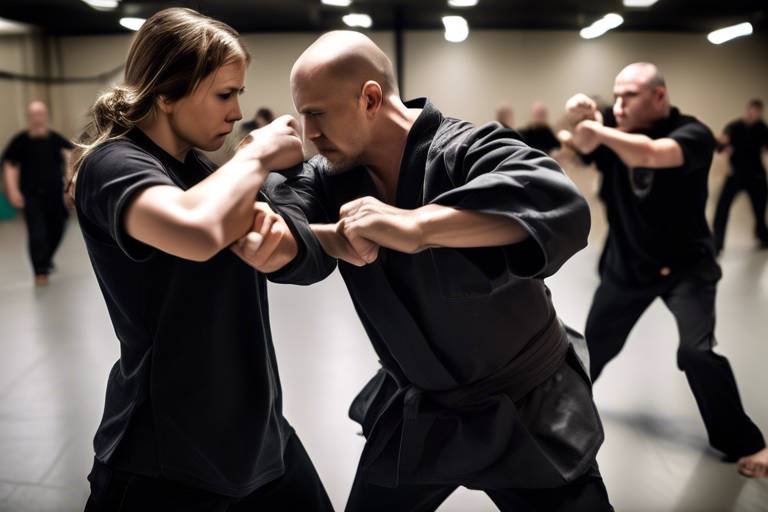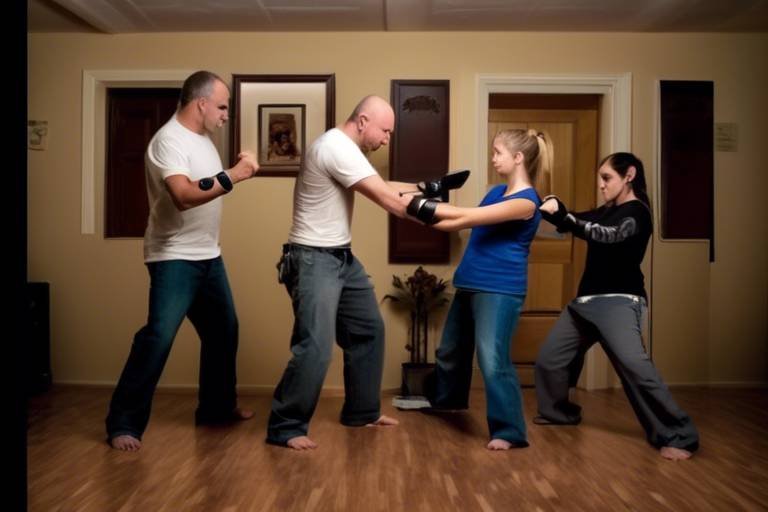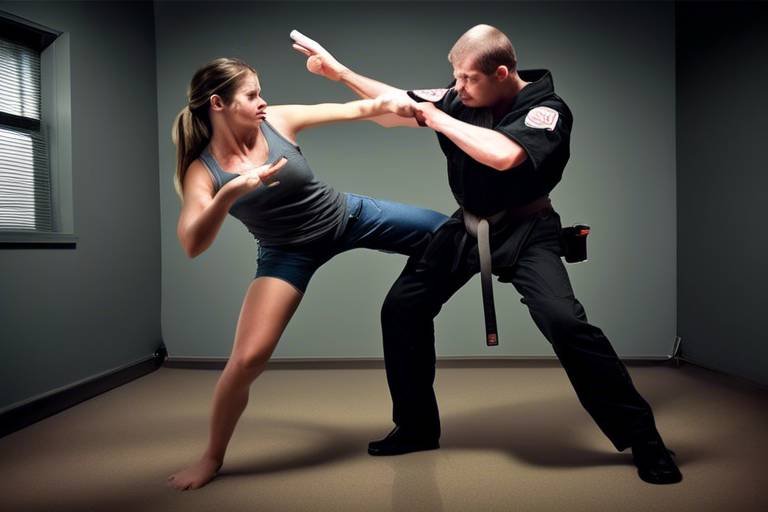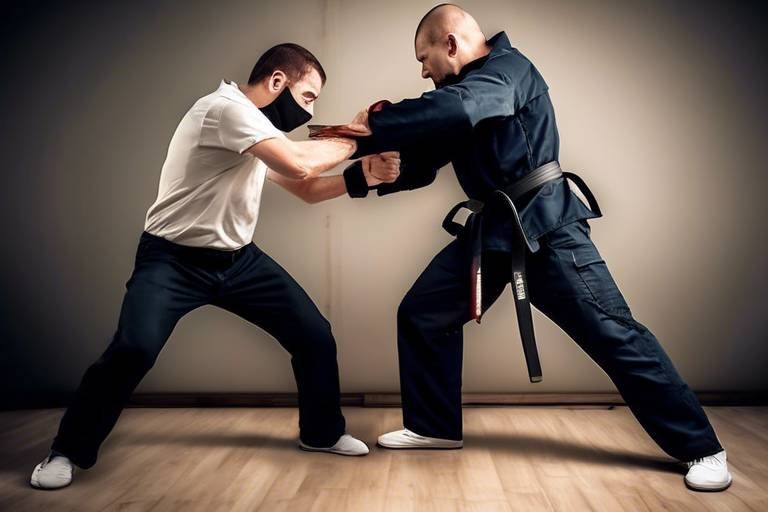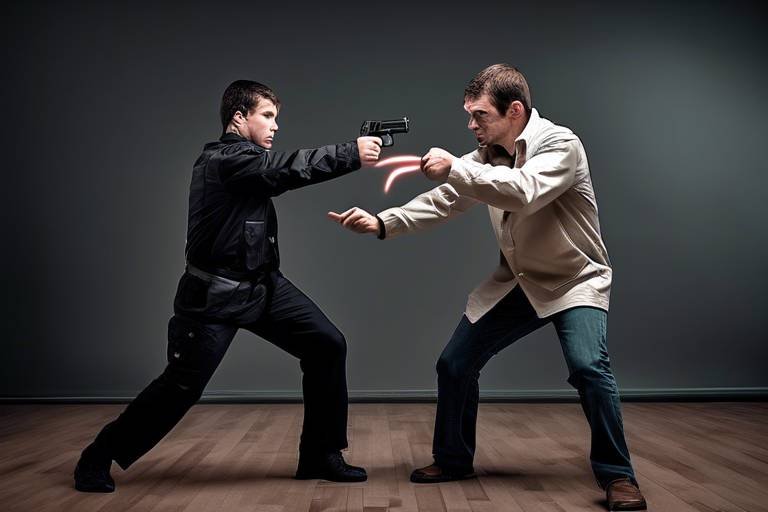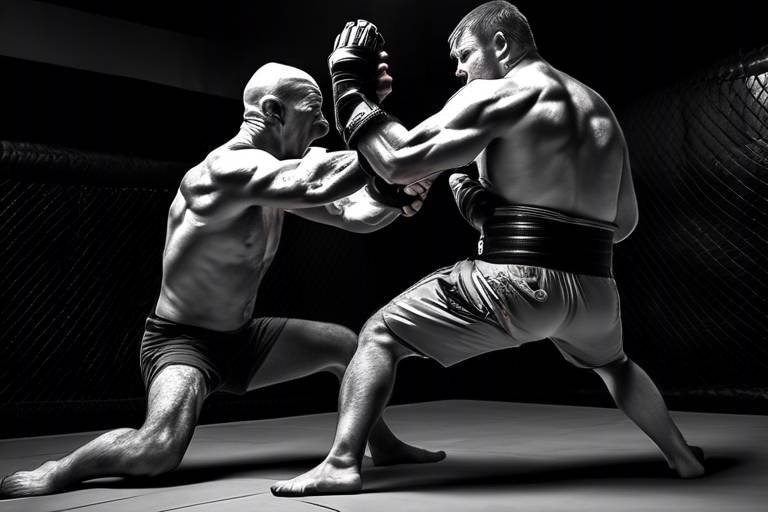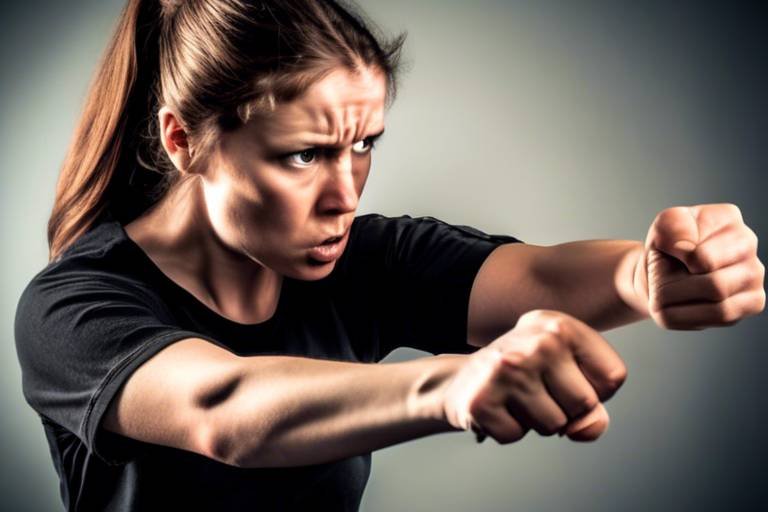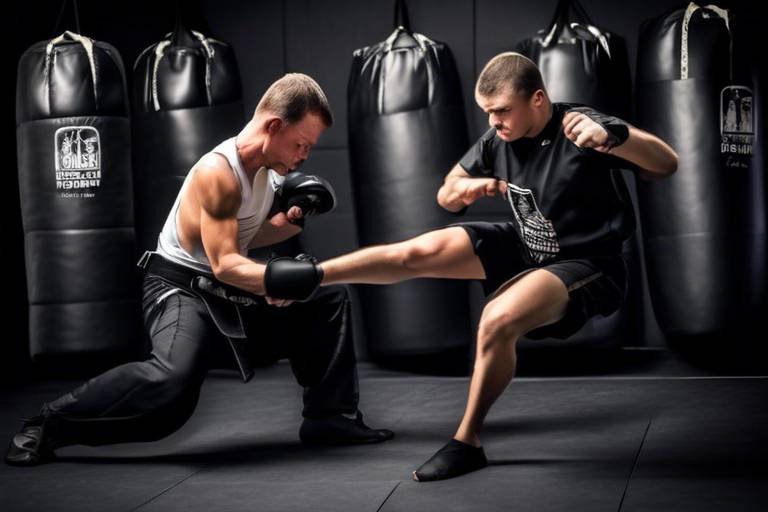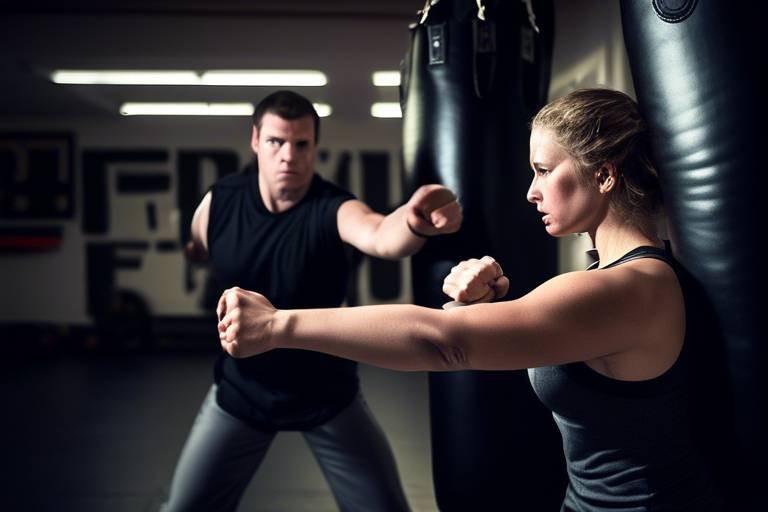How to Use Everyday Items as Part of your Self-Defense Techniques?
In a world where personal safety is a growing concern, understanding how to use everyday items for self-defense can be a game-changer. Imagine walking down the street, feeling a sense of security because you know that the simple objects around you can be your allies in times of need. This article explores how common items found in daily life can be effectively utilized for self-defense, enhancing personal safety in various situations.
Self-defense is not just about physical confrontation; it’s a fundamental right to protect oneself from harm. It’s essential to grasp the principles behind self-defense, as they empower you to respond effectively in threatening situations. Think of self-defense as a mental toolkit, where awareness, preparedness, and the right techniques come together to create a shield against potential dangers. In today’s unpredictable world, having the ability to defend yourself can significantly boost your confidence and peace of mind.
Believe it or not, many ordinary objects can serve as effective self-defense tools. From the keys in your pocket to the pen in your bag, these items can be transformed into powerful defensive weapons. The key is to recognize their potential and learn how to use them effectively. Let’s dive into some of these items and explore their advantages in a self-defense scenario. For instance, did you know that your umbrella can be more than just a rain shield? Or that your phone can help you in emergencies beyond just calling for help? Here’s a closer look:
Keys can be more than just a means of entry; they can also be used to fend off attackers. When held correctly, a key can be a formidable tool for self-defense. Imagine being confronted by an aggressor and having the ability to use a simple key to create distance or inflict a quick strike. This section discusses techniques for using keys effectively in self-defense, helping you turn a mundane object into a powerful asset.
Proper grip techniques can enhance the effectiveness of keys in self-defense. To maximize impact, hold your key firmly between your fingers, with the sharp end protruding. This grip allows you to strike with precision while maintaining control. Think of it as wielding a mini sword—your fingers become the hilt, and the key is your blade. Practice this grip to ensure you can respond quickly if needed.
Knowing where to strike is crucial when using keys for self-defense. Aim for sensitive areas such as:
- The eyes
- The throat
- The groin
- The hands
By targeting these vulnerable spots, you can incapacitate an attacker long enough to escape. Remember, your goal is to create an opportunity to get away, not to engage in a prolonged confrontation.
A pen is a common item that can be surprisingly effective in self-defense situations. It’s lightweight, easy to carry, and can be used to jab or poke at an attacker. When using a pen, aim for the same sensitive areas discussed earlier. The key here is to maintain a firm grip and strike with intention. Imagine your pen as a dart—every jab should be precise and aimed at creating an escape route.
Beyond keys and pens, several other everyday items can be utilized for self-defense. Let’s explore a few more objects that might be lying around your home or office, waiting to be transformed into protective tools.
An umbrella can serve as a surprising self-defense weapon. Not only can it block incoming strikes, but it can also be used to jab at an attacker. When using an umbrella, keep it open to create a barrier between you and the aggressor. You can also use the pointed end to strike if necessary. Think of your umbrella as a shield and a sword combined—protecting you while giving you the means to fight back.
In addition to physical items, technology plays a role in self-defense. Personal safety apps can alert others or provide assistance in emergencies. These apps often come with features such as GPS tracking, emergency contacts, and quick dialing to authorities. By having such technology at your fingertips, you can enhance your safety net. It’s like having a virtual guardian angel—always ready to assist you when needed.
Q: Can everyday items really be effective for self-defense?
A: Absolutely! Items like keys, pens, and umbrellas can be utilized effectively in self-defense situations when used correctly.
Q: Is it legal to use everyday items for self-defense?
A: The legality of using items for self-defense varies by location. It’s important to understand your local laws regarding self-defense.
Q: How can I practice using these items for self-defense?
A: You can practice grip techniques and targeting methods at home. Consider enrolling in a self-defense class to enhance your skills.

Understanding Self-Defense
Self-defense is not just a concept; it's a fundamental right that empowers individuals to protect themselves from harm. In a world where unpredictability lurks around every corner, understanding the principles of self-defense becomes crucial. It's about more than just physical techniques; it's about awareness, preparation, and the ability to respond effectively in threatening situations. Imagine walking down a dimly lit street, and suddenly, you sense someone following you. What do you do? This is where self-defense knowledge kicks in, providing you with the confidence to take action.
At its core, self-defense is the legal justification for using reasonable force to protect oneself from imminent danger. This means that if someone threatens your safety, you have the right to defend yourself. However, it's essential to understand the boundaries of self-defense. Engaging in excessive force can lead to legal repercussions, so knowing when and how to respond is paramount. The following points outline the key principles of self-defense:
- Awareness: Being aware of your surroundings can help you avoid dangerous situations before they escalate.
- De-escalation: Whenever possible, try to diffuse the situation verbally before resorting to physical self-defense.
- Proportionality: The force you use must be proportional to the threat you face. Responding to a verbal threat with physical violence may not be justified.
In addition to these principles, self-defense training can provide you with the skills necessary to react swiftly and effectively. Many people think that self-defense is only about martial arts or physical strength, but that's a misconception. It's about strategy, mindset, and using your environment to your advantage. For example, consider the idea of using everyday items as defensive tools. Your keys, a pen, or even your umbrella can become effective means of protection if you know how to use them. This is where creativity meets practicality, allowing you to turn the ordinary into the extraordinary.
Moreover, self-defense isn't solely a physical endeavor; it also involves mental preparedness. Developing a strong mindset can significantly enhance your ability to respond to threats. Visualization techniques, where you mentally rehearse potential scenarios, can help you feel more at ease when faced with real danger. Think of it as training your brain to react calmly and effectively, much like athletes do before a big game. The more prepared you are mentally, the more confident you will feel in your ability to handle unexpected situations.
In conclusion, understanding self-defense is about equipping yourself with knowledge, skills, and a proactive mindset. It's not just about fighting back; it's about being aware, prepared, and confident in your ability to protect yourself. By embracing these principles, you can enhance your personal safety and navigate the world with greater assurance. Remember, self-defense is a journey, and every step you take towards understanding it is a step towards empowerment.

Identifying Everyday Items
When it comes to self-defense, the best tools may be right under your nose. Everyday items that you carry with you can be transformed into effective self-defense tools, providing you with an added layer of safety in potentially dangerous situations. The beauty of using common objects is that they are often overlooked, making them a surprising advantage against an attacker. Imagine walking down the street, feeling a bit uneasy, when suddenly you spot a few items in your bag that can help you defend yourself. This realization can empower you and give you the confidence to navigate your surroundings more safely.
So, what are some of these everyday items that can be utilized in self-defense? Let’s dive into a few examples that can easily be found in most people's pockets, bags, or homes:
- Keys: More than just a way to unlock doors, keys can be used to jab at an assailant or create a distraction.
- Pens: A sturdy pen can be used to poke or strike, making it a handy tool if you find yourself in a tight spot.
- Umbrellas: Not only useful for rainy days, but they can also act as a barrier or striking tool when needed.
- Phone: Your smartphone can be a lifesaver, both for alerting authorities and as a blunt object if necessary.
Each of these items has its unique advantages and can be used effectively if you know how. For instance, keys can be gripped tightly between your fingers, turning them into a makeshift weapon. A pen can be wielded like a dagger, targeting vulnerable areas of an attacker's body. Umbrellas can be swung or thrust to create distance, while a phone can be used to call for help or even as a blunt force object if you're in a pinch.
Understanding how to utilize these everyday items not only enhances your self-defense skills but also instills a sense of preparedness. It’s about being aware of your surroundings and recognizing that safety can sometimes be found in the most mundane objects. By incorporating these items into your self-defense strategy, you can feel more secure and ready to face whatever comes your way. Remember, the goal is not just to fight back but to escape safely and seek help.
Now, let’s shift our focus to more specific tools like keys and pens, and explore how to use them effectively in self-defense scenarios. The next sections will detail techniques and target areas that can maximize your chances of staying safe.

Keys as a Defense Tool
When it comes to self-defense, many people might overlook the humble key. However, these everyday items can be surprisingly effective when it comes to fending off an attacker. Imagine this: you're walking to your car late at night, and you sense someone following you. Instead of panicking, you reach into your pocket and pull out your keys. Not just for unlocking doors, but as a potential weapon. This is where the versatility of keys shines. They can be used to create distance, inflict pain, or even distract an assailant long enough for you to escape.
To effectively use keys in a self-defense situation, it’s essential to understand the mechanics involved. First and foremost, your grip is crucial. You want to hold your keys in such a way that they become an extension of your hand. By using a firm grip, you can create a makeshift weapon that can strike with precision. Consider holding the keys between your fingers, allowing the sharp edges to protrude. This method can turn a simple set of keys into a formidable tool for self-defense. The element of surprise is also on your side; attackers often don’t expect their victims to fight back with such unexpected items.
When it comes to grip techniques, there are a few methods you can employ to maximize the effectiveness of your keys. For instance, try the fist grip technique. This involves holding the keys tightly in your fist, with the jagged edges sticking out between your fingers. This grip not only provides a solid hold but also allows for powerful strikes. Another technique is the palm grip, where you hold the keys in the palm of your hand, ready to jab at an attacker. Whichever method you choose, practice makes perfect. The more comfortable you are with your grip, the more effective you will be in a tense situation.
Knowing where to strike is just as important as the tool you're using. If you find yourself in a situation where you need to defend yourself with your keys, aim for vulnerable areas on your attacker. The eyes, throat, and groin are prime targets that can incapacitate an assailant quickly. For instance, a swift jab to the eyes can create an opportunity for you to escape. Additionally, striking the throat can disrupt an attacker's breathing, giving you precious seconds to get away. Remember, the goal is not to engage in a prolonged fight but to create a window for your escape.
In conclusion, keys are more than just a means to unlock doors; they can be a vital part of your self-defense arsenal. By understanding how to grip them properly and knowing where to strike, you can turn a mundane object into a powerful tool for personal safety. So next time you're out and about, remember that your keys could be your first line of defense.

Grip Techniques
When it comes to using keys as a self-defense tool, the way you grip them can make all the difference. A proper grip not only enhances your control over the keys but also increases the impact you can deliver during an encounter. Imagine holding a key like a small dagger; it’s not just about having it in your hand but knowing how to wield it effectively. First, you want to hold the key between your fingers, ensuring that the jagged edge is facing outward. This positioning allows you to jab or slash effectively, should the need arise.
One effective technique is known as the "key fist" grip. To achieve this, wrap your fingers around the key, making sure that your thumb is firmly pressed against the back. This grip provides stability and power, allowing you to strike with force. Additionally, you can use your other fingers to stabilize the key further, almost like creating a mini weapon in your hand. You want to ensure that you’re not just holding it loosely; instead, grip it tightly as if it were a lifeline. The tighter you hold, the more confidence you’ll have when the moment comes.
Another technique is the "key between the knuckles" method, where you insert the key between your fingers, aligning it with your knuckles. This grip can turn your hand into a formidable striking tool. If you find yourself in a situation where you need to defend yourself, a swift jab to sensitive areas like the eyes or throat can be incredibly effective. Remember, it’s not just about having the keys; it’s about how you use them. Practice these grips at home, perhaps in front of a mirror, to get comfortable with the motions and to build your confidence.
To summarize, here are some key points to remember about grip techniques:
- Key Fist Grip: Hold the key tightly with your fingers wrapped around it, jagged edge facing outward.
- Key Between the Knuckles: Insert the key between your knuckles for a powerful striking tool.
- Practice Makes Perfect: Regularly practice these grips to build muscle memory and confidence.
By mastering these grip techniques, you can transform a simple set of keys into an effective self-defense tool. It’s all about being prepared and knowing how to react in a moment of crisis. So, the next time you leave your house, remember that those keys in your pocket could be your first line of defense.

Target Areas
When it comes to using keys for self-defense, knowing where to strike can make all the difference. In a high-pressure situation, your instincts will kick in, and having a mental map of effective target areas can turn the tide in your favor. Think of it like a game of chess; knowing your opponent's weak spots can lead to a quick victory. Here are some key areas to aim for:
- Eyes: Aiming for the eyes can temporarily blind an attacker, giving you a crucial moment to escape.
- Throat: A strike to the throat can incapacitate an assailant, making it difficult for them to breathe or speak.
- Solar Plexus: A hit here can knock the wind out of someone, leaving them vulnerable.
- Groin: This is a classic target that can cause significant pain and distraction.
Each of these areas is not only vulnerable but also accessible when using keys as a weapon. For instance, if you’re gripping your keys with the keyring side protruding, you can jab at the eyes or throat effectively. The key is to remain calm and focused; remember, you're not just defending yourself but also creating an opportunity to escape. Think of it as a dance; you need to move with intention and purpose. The more you practice these techniques in your mind, the better equipped you'll be when a real situation arises.
In the heat of the moment, it's easy to forget these strategies. That's why visualization is essential. Picture yourself in a scenario where you need to defend yourself; visualize the movements, the strikes, and the escape route. This mental rehearsal can boost your confidence and prepare you for the unexpected.
Moreover, it's important to remember that self-defense is not just about physical confrontation. The best defense is often avoidance. If you can escape a dangerous situation before it escalates, that’s the ideal outcome. But if it comes down to it, knowing where to strike can give you the upper hand. Always keep your head on a swivel and be aware of your surroundings; awareness is your first line of defense.

Using a Pen for Protection
When you think of a pen, you probably envision jotting down notes or signing important documents. But did you know that this everyday item can double as a powerful self-defense tool? It's surprising how something so simple can be transformed into a means of protection in a pinch. Imagine walking down a dimly lit street when suddenly you feel someone following you. You reach for your pen, and it becomes your lifeline. In this section, we'll explore how to wield a pen effectively for self-defense, turning it from a mundane writing instrument into a formidable weapon.
First, let's talk about technique. The key to using a pen for self-defense lies in how you hold it and where you aim it. You should grip the pen firmly, holding it like you would a dagger, with the pointed end facing your attacker. This grip not only gives you control but also maximizes the potential for impact. Most pens are designed to be sturdy, so they can withstand the pressure of a defensive strike. Aim for vulnerable areas on an assailant, such as the eyes, throat, or soft spots on the body. A quick jab to these areas can create an opportunity for you to escape.
Now, you might wonder, what makes a pen effective in self-defense? The answer lies in its accessibility and the element of surprise. In a confrontation, many attackers won't expect you to use a pen as a weapon. This unexpected response can catch them off guard, giving you the upper hand. Additionally, a pen is lightweight and easy to carry, making it a practical option for anyone concerned about personal safety. It’s like having a secret weapon tucked away in your pocket, ready to spring into action at a moment’s notice.
To illustrate the effectiveness of using a pen for self-defense, consider the following scenarios:
| Scenario | Action | Outcome |
|---|---|---|
| Attacker Approaches | Grip pen tightly, point towards attacker | Creates a barrier and shows readiness to defend |
| Direct Confrontation | Target eyes or throat with a quick jab | Disorients attacker, allowing for escape |
| Surprise Element | Use pen in unexpected ways (e.g., thrust, swipe) | Gives you a tactical advantage |
In summary, a pen can be an incredibly effective self-defense tool when used correctly. Its small size makes it easy to carry, and its potential for surprise can turn the tide in a dangerous situation. Remember, the goal is not to engage in a prolonged fight but to create an opportunity to escape and seek help. So, next time you pick up a pen, think of it as more than just a writing instrument; it could be your best friend in a moment of need.
- Can any pen be used for self-defense? Yes, while any sturdy pen can work, those with a pointed tip or a thicker body are generally more effective.
- Is it legal to use a pen for self-defense? Laws vary by location, but using a pen in self-defense is generally permissible as long as it is proportional to the threat.
- What other items can I use for self-defense? Everyday items like keys, umbrellas, and even personal safety apps can also be effective in protecting yourself.

Other Common Items
When it comes to self-defense, the creativity of the human mind knows no bounds. Everyday items, often overlooked, can be transformed into powerful tools for protection. Imagine walking down the street, and you suddenly feel threatened. Instead of panicking, you can reach for something as simple as your umbrella or even your bag. These items can provide an unexpected advantage in a tense situation. Let's dive into a few more common objects that can be surprisingly effective in self-defense scenarios.
First up, let's talk about the humble umbrella. Most people carry one to shield themselves from the rain, but it can also serve as a defensive weapon. With a sturdy frame, an umbrella can be used to block incoming strikes or even jab at an assailant. The key here is to maintain a firm grip and use your body weight to add force to your movements. You can swing the umbrella like a bat or thrust it forward to create distance between you and your attacker. Not only does it provide physical protection, but the element of surprise can also catch an assailant off guard. Imagine the look on their face when they realize that your umbrella is more than just a rain shield!
Next on our list is the personal safety app. In our tech-driven world, smartphones are practically an extension of ourselves. There are numerous apps designed specifically for personal safety. These apps can alert friends or family with your location in case of an emergency, making them invaluable in a threatening situation. Some even have built-in features that allow you to sound an alarm or record video evidence of an incident. Utilizing technology in self-defense not only enhances your safety but also empowers you with the ability to reach out for help instantly. It’s like having a personal bodyguard in your pocket!
Additionally, consider your bag or backpack. It might seem ordinary, but a well-packed bag can be a formidable self-defense tool. The weight of a full bag can deliver a powerful swing if you need to strike an attacker. Moreover, if you have items like a water bottle or a laptop inside, these can be used to create distance or block incoming attacks. Just imagine swinging your bag to create space, or using it as a shield while you make your escape. The versatility of a backpack is often underestimated, but it can be a lifesaver in critical moments.
Lastly, don’t forget about everyday clothing items. Believe it or not, a belt can be an effective self-defense tool. If you find yourself in a dangerous situation, you can use your belt to either strike or restrain an attacker. The buckle can be particularly useful for delivering a quick jab, while the length of the belt can help you keep distance or even immobilize an assailant temporarily. Just like that, your everyday belt transforms into a self-defense weapon!
In conclusion, the possibilities are endless when it comes to using everyday items for self-defense. The key is to remain aware and think creatively about your surroundings. By understanding how to utilize these common objects effectively, you can enhance your personal safety and feel more empowered in any situation.
Q: Can I really use an umbrella for self-defense?
A: Absolutely! An umbrella can be used to block strikes and even jab at an attacker. Its surprising nature can catch an assailant off guard.
Q: What should I look for in a personal safety app?
A: Look for apps that offer location sharing, emergency alerts, and features like a loud alarm or video recording capabilities.
Q: Are there any legal implications for using everyday items in self-defense?
A: Laws vary by location, so it's crucial to understand your local self-defense laws. Generally, using an item in self-defense is permissible as long as it is proportional to the threat faced.
Q: How can I practice using these items for self-defense?
A: You can practice by role-playing scenarios with a friend or taking self-defense classes that incorporate everyday items. The more familiar you are with your tools, the more effective you'll be in an emergency.

Umbrellas as Defensive Tools
When you think of an umbrella, your first thought might be of a rainy day or a sunny afternoon. But did you know that this common item can also serve as an effective self-defense tool? Yes, that's right! An umbrella isn't just a shield against the elements; it can be a surprising asset in a self-defense situation. Imagine walking down the street when suddenly you feel threatened. Your umbrella, which you initially thought was just a nuisance to carry, can transform into a formidable defensive weapon.
One of the key advantages of using an umbrella for self-defense is its availability. Most people carry an umbrella, making it an easily accessible option in times of need. Moreover, its size and structure allow for various defensive techniques. For instance, you can use the umbrella to create distance between you and an attacker, effectively blocking their advances. The sturdy frame can be used to jab or strike, while the fabric can obscure your movements, allowing you to surprise your assailant.
Here are some effective techniques for using an umbrella in self-defense:
- Blocking: Hold the umbrella horizontally to create a barrier between you and the attacker. This can help deflect incoming strikes.
- Jabbing: Use the tip of the umbrella to jab at vulnerable areas such as the eyes or throat. A quick thrust can create an opportunity for escape.
- Swinging: If the situation escalates, swinging the umbrella can deliver a powerful blow to the attacker, potentially incapacitating them.
In addition to these techniques, the element of surprise plays a crucial role. An attacker may not anticipate a person using an umbrella as a weapon, giving you a critical advantage. The key is to remain calm and focused; panic can cloud your judgment and hinder your ability to use the umbrella effectively. Practice these techniques in a safe environment so that you can react instinctively when it matters most.
To further illustrate the effectiveness of umbrellas as defensive tools, consider this comparison:
| Umbrella | Traditional Self-Defense Weapon |
|---|---|
| Commonly carried | Often requires a permit or special training |
| Can be used discreetly | May draw attention |
| Multi-purpose (protection from weather) | Single-purpose (self-defense) |
In conclusion, the umbrella is more than just a tool for shielding yourself from rain or sun; it's a versatile self-defense weapon that can be easily integrated into your daily life. By understanding how to utilize this everyday item effectively, you can enhance your personal safety and feel more empowered in potentially dangerous situations. So, the next time you grab your umbrella, remember that you are not just preparing for the weather—you are also arming yourself with a unique self-defense tool!
Q: Can any umbrella be used for self-defense?
A: While most umbrellas can be used defensively, those with a sturdy frame and pointed tip are more effective. Compact umbrellas may not provide the same striking power.
Q: Is it legal to use an umbrella for self-defense?
A: Generally, using an umbrella for self-defense is legal, but laws may vary by location. It's essential to know the self-defense laws in your area.
Q: What should I do if I feel threatened?
A: Trust your instincts. If you feel unsafe, use your umbrella to create distance, and if needed, call for help or alert others in the vicinity.

Personal Safety Apps
In today's digital age, personal safety apps have emerged as essential tools for enhancing your security. These apps can turn your smartphone into a powerful ally in times of distress. Imagine walking alone at night and feeling uneasy. With just a few taps on your phone, you can alert friends, family, or even local authorities of your situation. Isn't that a comforting thought?
Many of these apps come loaded with features designed to keep you safe. For instance, some allow you to share your location in real-time with trusted contacts. This way, if you ever feel threatened, your loved ones can track your whereabouts and respond swiftly. It's like having a virtual safety net right in your pocket!
Here are a few key features that you might find in personal safety apps:
- Emergency Alerts: Instantly notify your emergency contacts with your location and a message.
- Location Tracking: Share your real-time location with friends or family for added security.
- Safety Timer: Set a timer for your arrival at a destination; if you don’t check in, an alert is sent to your contacts.
- Fake Call Feature: Some apps can simulate an incoming call, providing a way to escape uncomfortable situations.
To give you a clearer picture of how these apps function, let’s take a look at a comparison of popular personal safety apps:
| App Name | Key Features | Platforms |
|---|---|---|
| SafeTrek | Emergency alerts, location tracking | iOS, Android |
| Life360 | Location sharing, driving safety | iOS, Android |
| bSafe | Fake call, SOS button | iOS, Android |
While having a personal safety app is fantastic, it’s crucial to remember that these tools are most effective when combined with awareness and proactive measures. Always stay alert to your surroundings and trust your instincts. If something feels off, don’t hesitate to use your app or seek help. In essence, personal safety apps are not just about technology; they are about empowering you to take control of your safety.
So, the next time you step out, consider downloading a personal safety app. It’s like carrying a little piece of security in your pocket, ready to protect you when you need it most. After all, being prepared is the best form of self-defense!
Frequently Asked Questions
- What items can I use for self-defense?
There are many everyday items that can be used for self-defense. Common objects like keys, pens, and even umbrellas can serve as effective tools to protect yourself in dangerous situations. The key is to know how to use them properly and to be aware of your surroundings.
- How can I use my keys for self-defense?
Keys can be a great self-defense tool when held correctly. You can grip a key between your fingers, allowing it to act as a stabbing weapon. Aim for vulnerable areas on an attacker, such as the eyes or throat, to maximize impact and create an opportunity to escape.
- Is using a pen really effective for self-defense?
Absolutely! A pen can be a surprisingly effective self-defense weapon. It can be used to jab or strike sensitive areas of an attacker, such as the eyes or throat. Plus, it's discreet and easy to carry, making it an ideal choice for personal safety.
- Can an umbrella be used for self-defense?
Yes, an umbrella can be used in self-defense. It can serve as a barrier to block strikes or be swung to hit an attacker. The key is to use it to create distance and give yourself time to escape.
- What are personal safety apps, and how can they help?
Personal safety apps are designed to enhance your security by providing features like emergency alerts, location tracking, and quick access to emergency contacts. They can be a valuable tool in dangerous situations, ensuring that help is just a tap away.
- How can I improve my self-defense skills?
Improving your self-defense skills involves practice and education. Consider taking self-defense classes, watching instructional videos, or practicing with friends. The more familiar you are with techniques and tools, the more confident you'll feel in a real-life situation.



